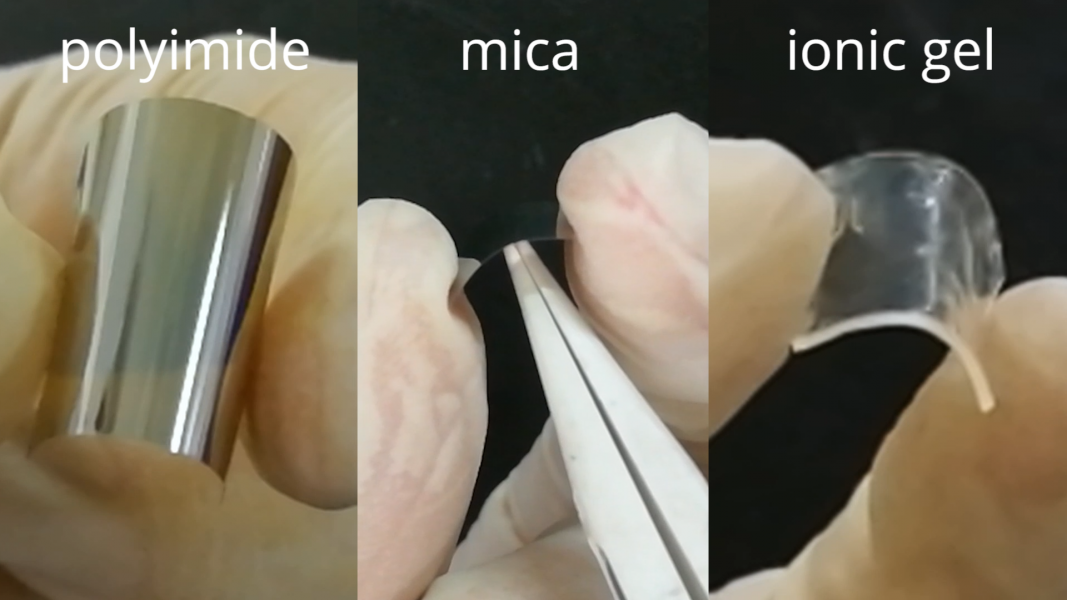Complex natural structures are typically flexible and soft. Man-made electronic devices, on the other hand, are often rigid and hard. Integrating the two requires the development of flexible electronics. Flexible spintronics, for example, could lead to wearable data storage and communication devices.
In their article in Advanced Materials, Prof. Ziyao Zhou, Prof. Ming Liu, and their colleagues from Xi’an Jiaotong University, China, demonstrate a flexible, synthetic anti-ferromagnetic nanostructure that can be electrically tuned.
Perpendicular synthetic anti-ferromagnetic nanostructures were fabricated on flexible polyimide and mica substrates. An ionic gel electrolyte and gold wire were used as the gate electrodes. When a gating voltage is applied, anions and cations in the gel migrate toward the gold and ionic gel electrodes, respectively.
Flexibility tests demonstrated that compressive stress caused by concave bending transforms anti-ferromagnetic coupling into ferromagnetic coupling, while convex bending enhances anti-ferromagnetic coupling.
The magnetic properties of ionic gel gating configurations with different curvatures were tested, and suggest good performance of the device under flexure conditions.
The gating process can control domain switching effectively and is maintained under bent conditions, demonstrating its potential for flexible spintronics.
To find out more about this platform to produce flexible, stable spintronic devices, please visit the Advanced Materials homepage.

















